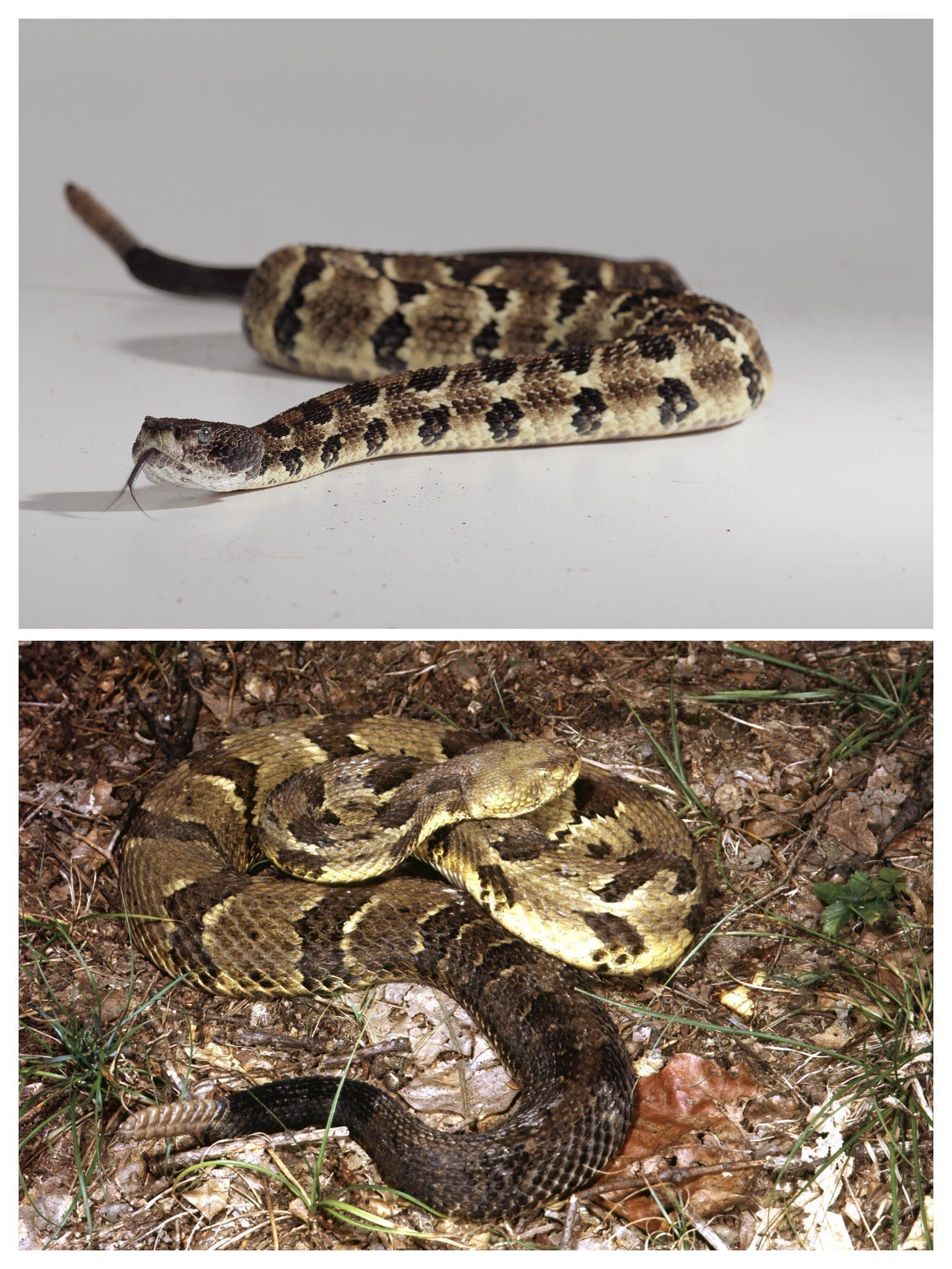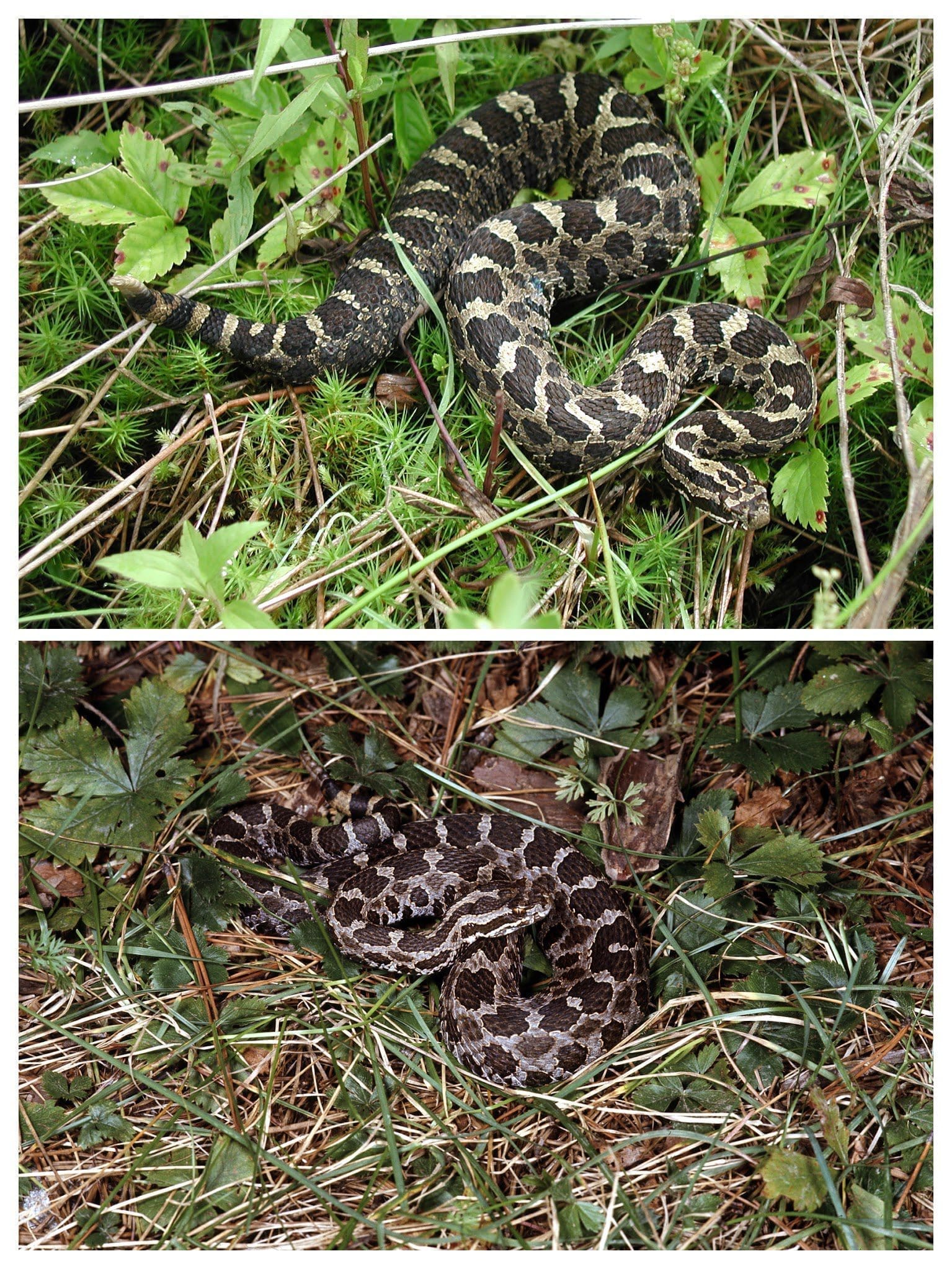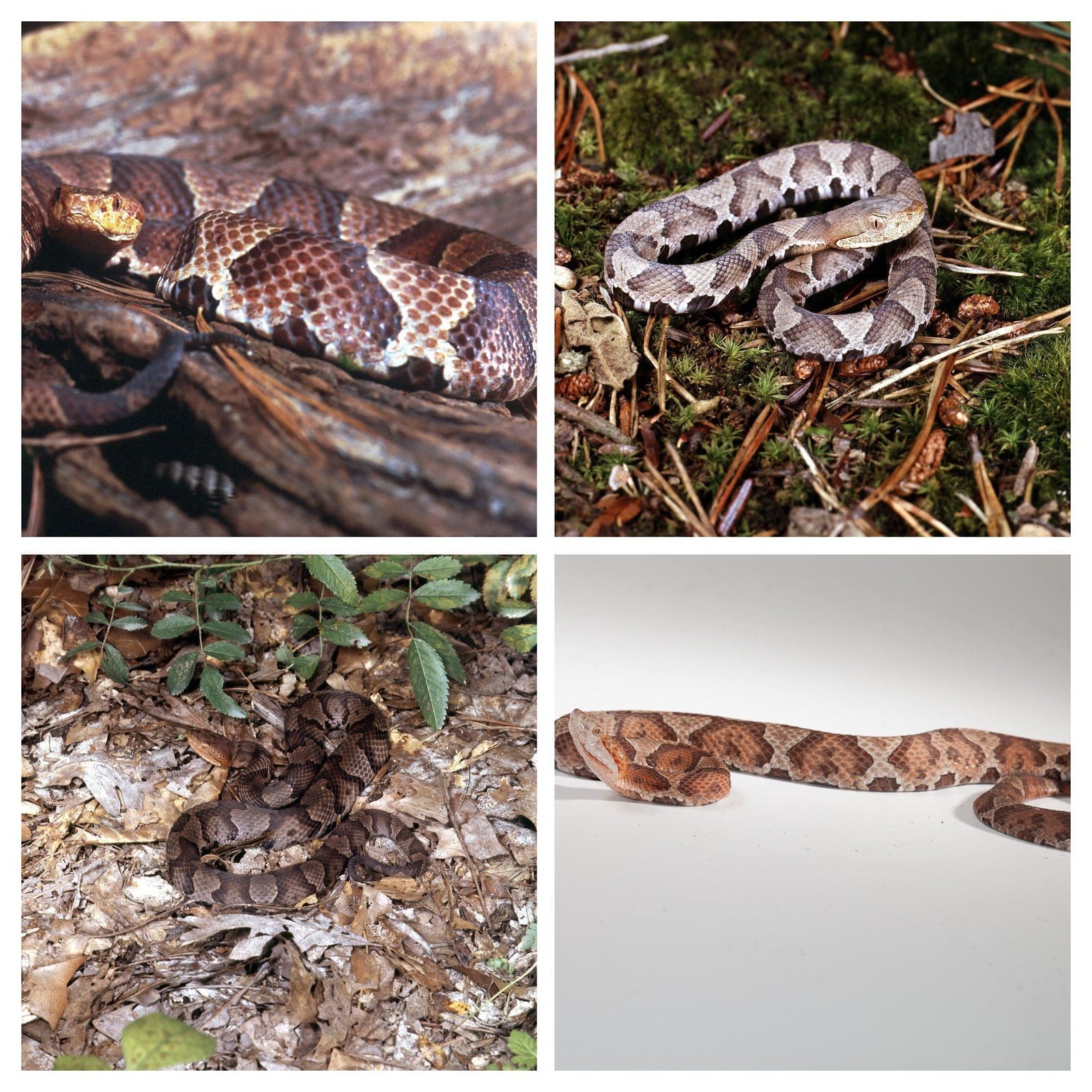
TIMBER RATTLESNAKE The most toxic of the venomous snakes to be found in Ohio the Timber Rattlesnake
By: Anna Wozniak
THE VILLAGE REPORTER
As warmer temperatures become more and more regular, many people find themselves exploring the outdoors more than usual.
While the wonderful sights that exploring nature can bring are definitely worth the risk, it is naive to think that one should not be prepared to encounter their slithery neighbors as they too explore the world Spring and Summer have to offer.
While most snakes keep their distance from people out of fear, sometimes confrontations between humans and snakes are unavoidable.
Most snakes that you encounter in Ohio will not be venomous, although this does not mean they will not bite you.
In the event of a snake bite, it is important to try and determine what type of snake bit you when determining whether or not to receive professional treatment for the wound.
If you are unsure, always seek medical attention, as the “better safe than sorry” rule should always apply when dealing with potentially venomous creatures.
If you are bitten by a snake, it is important to know that there are only three venomous snakes found in Ohio.
It is even more important to note that even though these snakes can be found here, it is rare for them to be sighted as far north as Fulton and Williams Counties.
As Ohio Division of Wildlife’s Wildlife Communications Specialist Abby Ditomassi shared, Massasauga Rattlesnakes “have not been found in Fulton County since prior to 1976, and were never found in Williams County. Copperheads and Timber Rattlesnakes have never historically been found in Northwestern Ohio.”

As you get further into the south, the risk of encountering vipers of all sorts increases. There are also physical differences between what is known as a “venomous viper” and a snake.
Former 4-H Educator and present Williams County Sheriff Sheriff Tom Kochert explained that “vipers will have a very obvious “v” shape to their head, and, like all predators, their eyes will be directly at the front of their head, staring straight at you.”
“A garter or milk snake is going to have the eyes on the side of their head. If you think about it, it’s the same way with birds.”
So, first things first: where are the eyes? Think about the difference between the way a turkey looks at you versus the way an eagle or an owl does, and the comparison becomes apparent.
The three snakes found in Ohio that you do have to worry about if bitten by are the Eastern Copperhead, Timber Rattlesnake, and the Massasauga Rattlesnake.
Snakes can be found in all sorts of different habitats, and it is important to remember that they seek out heat sources as they are cold-blooded.
Sheriff Kochert shared how snakes’ love for warmth caused railroad workers a huge issue, as Timber Rattlesnakes were known to bathe themselves on the railroad beds, catching workers unaware and expanding their habitat along the railways.
“The good news,” Sheriff Kochert shared, “is that a rattlesnake is going to make themselves known. Not only are they extremely rare to run into, but they are going to give you an audible warning to back off.”
The Eastern Copperheads are bright in hue (like a penny), and Communications Specialist Abby Ditomassi noted that of these three, Timber Rattlesnakes would be the “most toxic.”
She also shared that Eastern Copperhead encounters are more common than encounters with the other two, as both Timber and Massasauga Rattlesnakes are “endangered” while the Eastern Copperhead is “uncommon.”
Ditomassi also shared that “statistics shows that most bites occur in the demographic of men aged 16-44, on their hand, with alcohol usually involved.”
“So, more bites come from attempting to kill or handle a snake than just walking by one on the trail.”

It is important to note that snakes will be more scared of you than you are of them, so avoidance is always the best policy when considering how to interact with wild snakes.
Luckily (unluckily, if you’re a snake) cities and farmland are not ideal for snakes, as wet prairies, bogs, and swamps are their natural habitats.
Ditomassi shared that draining wetlands for urbanization and farming is what has resulted in snakes being pushed out of their habitats and encountered less frequently.
Still, urbanization and wildlife meet sometimes, and it is best to be prepared to run into anything.
While it is always best to keep a safe distance from wild snakes, remember to especially avoid these three if possible, and familiarize yourself with the telltale signs of a “viper” versus just a snake so you can seek help sooner if appropriate when bit.
Anna can be reached at anna@thevillagereporter.com



